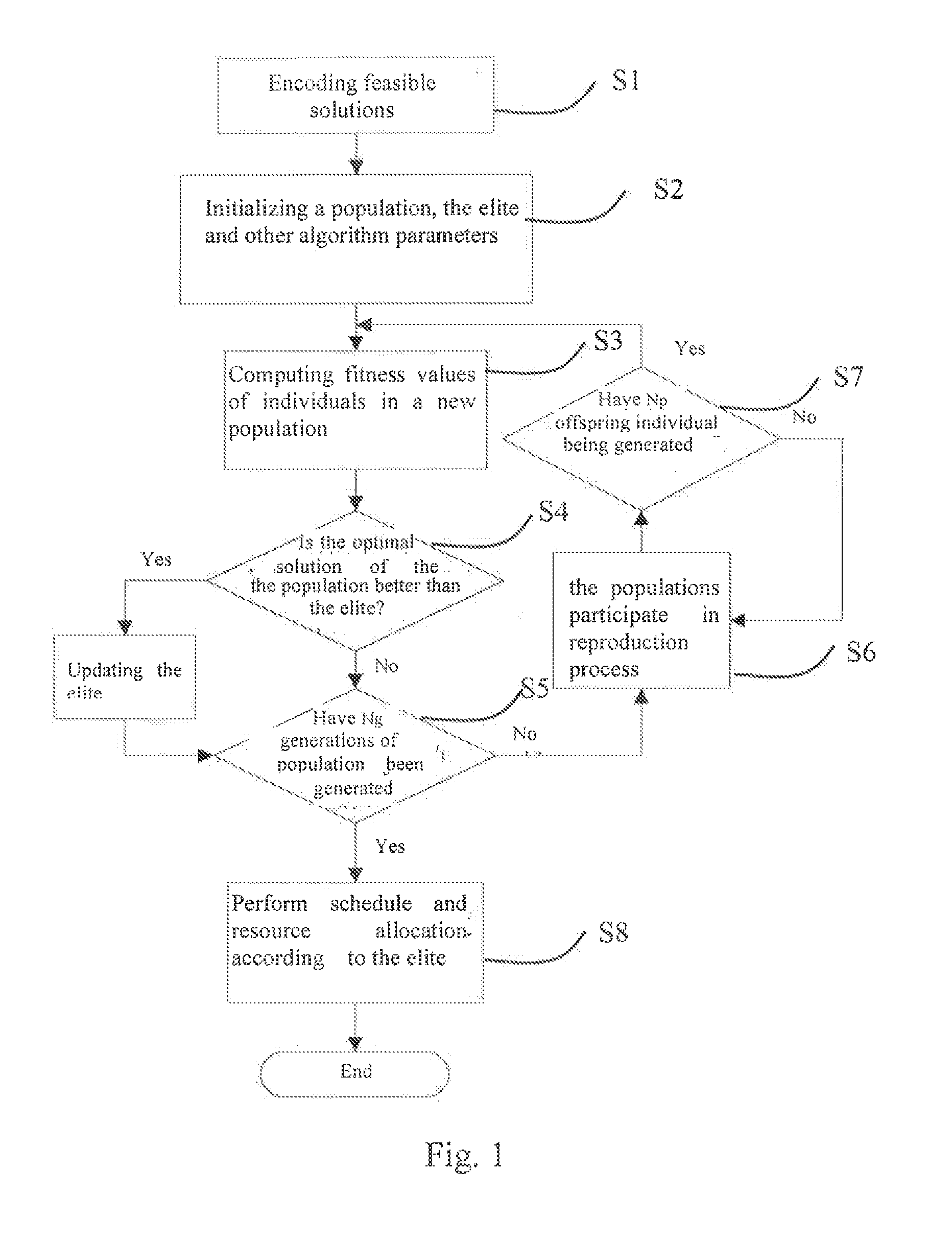Method for joint optimization of schedule and resource allocation based on the genetic algorithm
a genetic algorithm and resource allocation technology, applied in the field of wireless communication, can solve the problems of reducing throughput, affecting the efficiency of users, and bringing a great challenge to user schedule and wireless resource allocation, so as to improve system performance, improve reliability, and reduce computing complexity
- Summary
- Abstract
- Description
- Claims
- Application Information
AI Technical Summary
Benefits of technology
Problems solved by technology
Method used
Image
Examples
embodiment 1
[0072]Take a downlink CoMP system for example, environment of Embodiment 1 is shown in FIG. 6. N neighbor base stations, e.g., N=3, simultaneously provide service to users which are distributed randomly at cell edges of shadow areas, wherein the radium of each cell is averagely 500 m and each base station has the same maximum transmission power. Moreover, it is assumed that there are M subcarriers in this system, e.g., M=4, and a reuse factor 1 is reused in each base station, and large-scale fading, shadow fading and Rayleigh fading in channels between the base station and the user are considered, and for the genetic algorithm, a population contains Np individuals, e.g., Np=50, Ng generations' searching is performed, e.g., Ng=100 and the mutation probability is Pm=0.05.
[0073]to Target R is optimized as the greatest system total transmission bits as follows:
maxR=∑m=1M∑k∈Smbm,k(3)
[0074]wherein bm,k represents bit rate of user k on subcarrier m and bm,k {0,2,4,6}; sm is the set of the ...
embodiment 2
[0077]The downlink CoMP system, system module setting, and parameters involved in Embodiment 2 are the same as those in Embodiment 1. To balance both overall system rate and fairness of the users, different target functions and their corresponding fitness functions can be set so as to obtain different optimal targets. Proportional fair is well known as a rule for balancing throughput and fairness of users. In order to take fairness of cell-edge users into consideration as well, the way of schedule and resource allocation can maximize the following target function:
maxR=∑k∈Smlog2(∑m=1Mbm,k)(4)
[0078]In formula (4), bm,k and sm are the same as those in Embodiment 1.
[0079]Another situation is that due to different kinds of services, different users in the system have different lowest rate requirements. In order to guarantee fairness of users with different rate requirements, optimal target function is defined as
maxR=∑m=1M∑k∈Smwk·bm,k(5)
[0080]wherein, Wk is weight value of user k; the wei...
PUM
 Login to View More
Login to View More Abstract
Description
Claims
Application Information
 Login to View More
Login to View More - R&D
- Intellectual Property
- Life Sciences
- Materials
- Tech Scout
- Unparalleled Data Quality
- Higher Quality Content
- 60% Fewer Hallucinations
Browse by: Latest US Patents, China's latest patents, Technical Efficacy Thesaurus, Application Domain, Technology Topic, Popular Technical Reports.
© 2025 PatSnap. All rights reserved.Legal|Privacy policy|Modern Slavery Act Transparency Statement|Sitemap|About US| Contact US: help@patsnap.com



